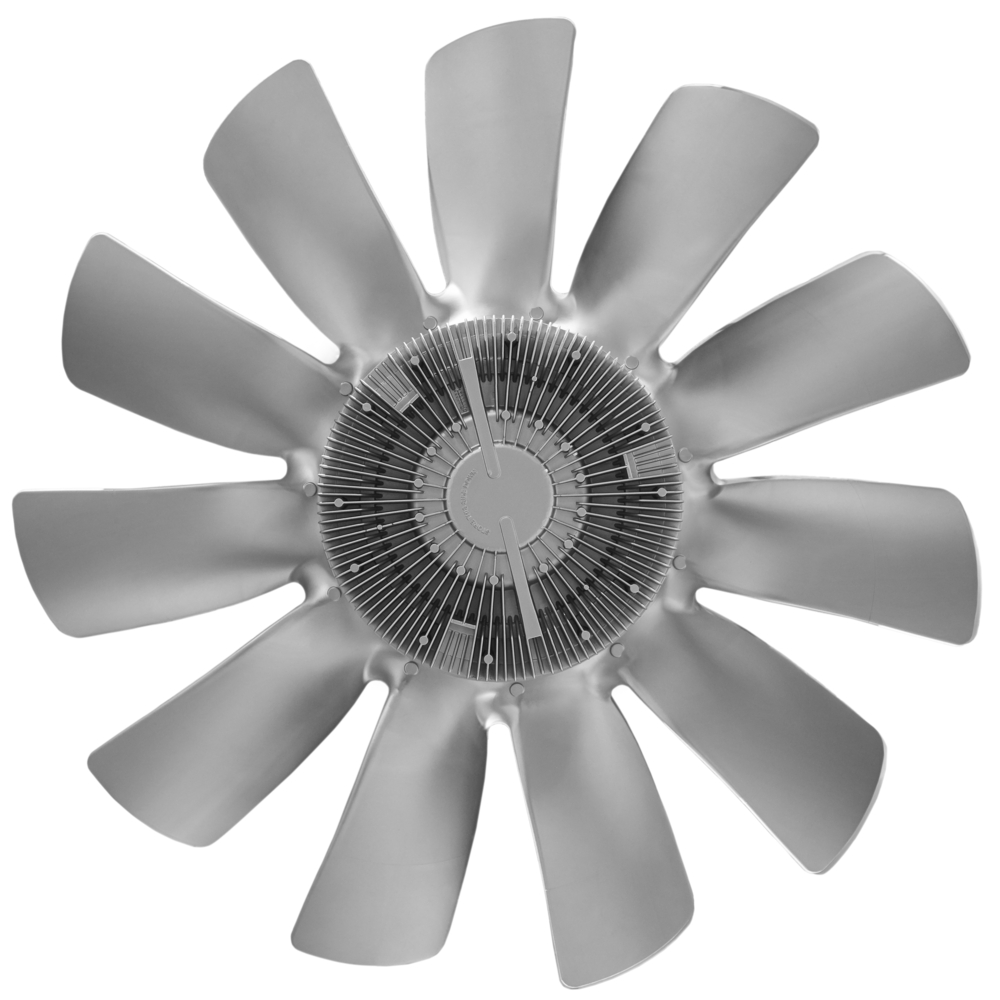Table of Contents (click to expand)
Fans do not come to rest immediately, as the kinetic energy cannot be transformed to a more useful form.
I’m a great fan of fans. These humble devices are clever mechanical contraptions, bending a force of nature to their will quite effortlessly. They’re often mistaken for cooling the room more when going fast, but they’re just “air benders” in the truest sense of the word.
Designed for humanity’s convenience, these devices have but one flaw – they stop at their own pace, and never as soon as we turn off the switch. What drives this fickle nature of fans?
How Does A Fan Work?
Let’s take a look at the components of a ceiling fan. Fans usually consist of a retention mechanism, such as a pedestal mounted on a base, or a bracket with a hook and down rod, in ceiling fans. The retention mechanism, along with the electrical wiring, is routed to the driving mechanism, which includes the motor, the hub and the blades.
The motor can be encased in the hub, such as in ceiling fans, or it can have a shaft that has been extended from a housing situated outside the hub. The blades of the fan connect to the rotor at the hub.
Most other fans are of similar construction, in that the blades and the rotor are the last leg of the driving mechanism.

The working of fans is governed by the design and orientation of the blades. If you take a close look at the blades of your fan, you will see a slightly arched, rather than a flat profile. This arching helps the blades cut through air, pushing it away from its source and into the desired zone of ventilation.
When this cutting and pushing action is multiplied through many high-speed revolutions driven by the motor, the result is a blast of constantly flowing air.
The use of fans is not restricted to personal spaces, such as homes. Fans serve a variety of ventilation and cooling needs, such as in computers and automobile radiators. They can be oriented in the conventional top-down manner, or placed sideways, depending on their intended purpose.
Also Read: Are Bladeless Fans Really Bladeless? How Do They Work?
Inertia In Action
Unless a body is acted upon by an external force, it will continue to remain in a state of rest or motion. We have all heard this law of physics before, but now it’s time to put it into action.
If you are cycling and decide to stop pedaling, you would eventually come to a stop. This is due to the presence of friction. The same friction that keeps your cycle rolling also takes away some of the energy you send through your pedals. When you stop pedaling, the friction keeps taking away that energy bit by bit, until no more of it is left. Granted, it will be a long way before you come to a halt, but you eventually do.

Let’s see how this works in the case of a fan.
A rotating fan has a lot of kinetic energy from the electrical energy being supplied to it. If you switch off the fan, there is still a tremendous amount of energy left within the fan that is being utilized to force air downwards. With no electrical energy available, the fan slowly uses its remaining kinetic energy to overcome the air resistance, until gradually coming to a halt.
Similarly, other rotational machinery, such as mixer grinders, drill machines, and machine shafts also exhibit this behavior, and are brought to rest by their bearing friction, which slowly expends the kinetic energy of the machine.
Also Read: Why Do Ceiling Fans Get Dusty, If They’re Always Moving?
Conservation Of Energy

Another very overused statement refers to the total energy of any system remaining constant. Energy never increases or decreases; it merely gets converted from one form to another.
However, we often hear about energy being wasted, which refers to energy being converted to a form that cannot be harnessed usefully. The energy lost in overcoming frictional forces by the bicycle, or the air resistance by the moving fan, are examples of wasted energy.
What Would Happen If The Fan Stopped Immediately?

Since the conservation of energy is the way of the universe, it is always prudent to not get in the way.
In theory, if a fan were to stop immediately, the residual kinetic energy would have to be absorbed by the fixed parts, namely the motor housing, down rod, electrical wiring and mechanical fixtures in the ceiling.
This would lead to catastrophic failure, as the sudden rotational energy would get instantly transferred to the down rod as an extremely high torsional force, causing it to twist and break. The remaining energy would also lead to the breakage of mechanical fixtures in both the ceiling and the fan.
In order to stop the fan from rotating immediately, we would have to devise a mechanism that takes away the large amount of kinetic energy, while converting it to a useful form of energy, without adding severe weight and cost implications to the fan.

Could something like regenerative braking, like what is used in electric vehicles, help us control our fans? Could we “hit the brakes” on a fan after it has been switched off in order to harness the energy and route it to a storage device? That would add one more consumable, namely brakes, to the fan’s construction, complicating it even further, while also adding service costs to this traditionally maintenance-free device.
How many appliances that we use on a daily basis lose energy like a fan? Food for thought!
How well do you understand the article above!

